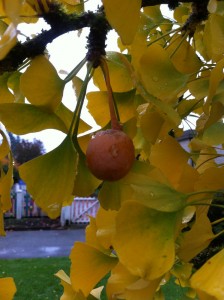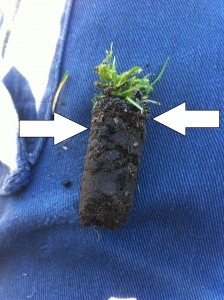If you are like me, you park your car and rush to do whatever is on your to do list. Perhaps it’s a sale or a Zumba class. But stop and look at the hard-working bioswale. The plants in it remove your vehicle pollutants, capture carbon and cool the surrounding air. Paved surfaces tend to heat up and act as heat islands.
Water is captured by the plants and slowly soaks into the ground and eventually reaches local streams the way nature intended.

Note that while periodic weeding normally happens in bioswales, the one pictured below is covered with arbor-chips (free and effective) and Horsetail (Equisetum) is NOT an enemy in this setting.













